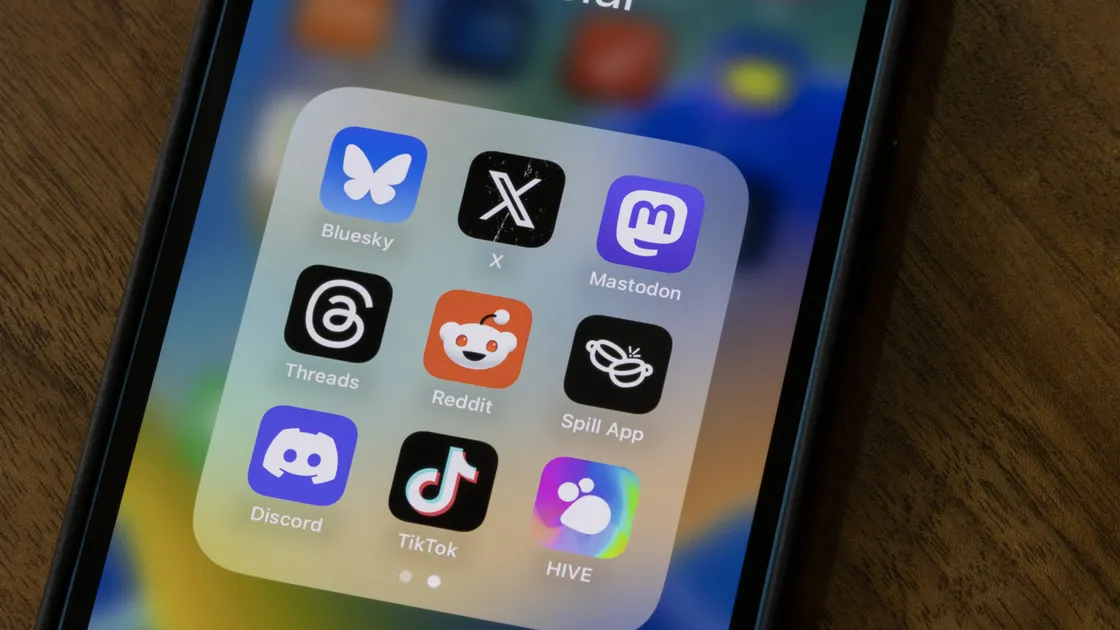Meme Marketing in Japan: Success Principles Every Global Brand Should Know

Meme Marketing, which has been gaining global attention, also holds great potential in the Japanese market.
However, due to cultural and linguistic differences, as well as strict legal regulations, many marketers may worry that “the same strategies won’t work here.” In fact, humor is often misunderstood in Japan, and meme-driven campaigns carry risks of public backlash or even compliance violations.
This article explores the theme of Meme Marketing in Japan, outlining the key risks and implementation steps that overseas companies should be aware of when entering the Japanese market. By reading through, you’ll gain clarity on where to be cautious to ensure safe execution and how to turn meme marketing into tangible results—helping you decide your next strategic move with confidence.
What Is Meme Marketing? Its Role in the Japanese Market
Meme Marketing is a strategy that leverages the organic sharing behavior of users on social media. While it has already become mainstream in the U.S. and Europe, the cultural context and consumer psychology in Japan differ significantly. Understanding these unique dynamics is the first step toward success in the Japanese market.
Why Meme Marketing Took Off Abroad
Meme Marketing spread rapidly across the U.S. and Europe. One of its biggest strengths is that it doesn’t require massive advertising budgets—users themselves spread the content. By tapping into humor and relatability, brands can naturally build awareness while closing the gap between themselves and their audience.
In global markets, memes are easily woven into daily conversations and even news cycles, enabling large-scale exposure within a short timeframe. This is particularly true among Gen Z and Millennials, who spend extensive time on social platforms and share memes actively within their communities. In other words, the sustainable value lies not in official brand advertisements, but in the joy users experience while spreading the content themselves.
Why Japan Is Starting to Pay Attention
In Japan, social media usage has been rising year by year. For younger generations, platforms like Instagram and TikTok have become an integral part of daily life. Trends born here often spread faster than those on TV or in magazines, and they directly influence purchasing behavior.
For example, a popular TikTok phrase or hashtag can quickly drive product sales or service adoption. Japanese consumers also place strong emphasis on empathy and a sense of closeness, which makes playful, humor-driven content more impactful than rigid, traditional ads.
In recent years, brands in Japan have seen success with witty social posts and user-participation campaigns that spread in a “meme-like” fashion, boosting both brand visibility and favorability.
To truly succeed, however, Meme Marketing in Japan cannot simply copy foreign models. The key is adapting to local culture and consumer psychology—this is where sustainable growth and genuine engagement begin.
Expected Impact and Benefits in the Japanese Market
Introducing Meme Marketing in Japan can deliver significant exposure at relatively low cost. Beyond that, it helps brands connect with younger audiences and cultivate a sense of approachability.
Viral Reach at Low Cost
One of the most attractive aspects of Meme Marketing is its ability to generate massive visibility even with limited budgets. In Japan, we are seeing more cases where catchy phrases or taglines originating on TikTok spread nationwide without heavy advertising spend.
This is possible because users feel enjoyment or empathy and choose to share the content voluntarily. Traditionally, brands had to spend substantial amounts to expand their reach, but with Meme Marketing, consumers themselves become the drivers of distribution, creating viral effects at a fraction of the cost.
For overseas companies, this reduced entry cost into the Japanese market is especially appealing. Even with modest budgets, content that resonates with Japanese social media culture can spread organically and build brand awareness. For ROI-focused marketers, this feature provides a strong case for adoption.
Why Gen Z and Millennials Respond
Another reason Meme Marketing is effective in Japan lies in the media habits of younger generations. Gen Z and Millennials rely more on social media than TV in their daily lives, and their conversations and trends are shaped heavily by what they see online.
While these audiences tend to be skeptical of traditional advertising, they actively engage with content that carries empathy, humor, or playfulness. For example, when discussing successful meme campaigns in Japan, cat memes cannot be ignored. Cats embody universal traits of “cuteness” and “relatability,” making them easy to empathize with and share.
In fact, according to a March 2024 trend survey by LINE Research, “cat memes” ranked No. 1 overall, underscoring their overwhelming viral power on Japanese social platforms.
source : https://manamina.valuesccg.com/articles/3316
These results indicate that incorporating cat memes in an organic way can serve as a powerful tool for capturing user attention. In Japan in particular, consumers tend to respond positively to humor that doesn’t feel forced, and the lighthearted nature of cat memes aligns perfectly with that preference.
Risks and Challenges Unique to the Japanese Market
When implementing Meme Marketing in Japan, cultural and legal differences can create unexpected risks. Simply applying global success models without adaptation may lead directly to public backlash or even legal issues.
Risk of Backlash and Cultural Misunderstandings
Japanese consumers place strong value on empathy and harmony. As a result, content with heavy satire or extreme expressions can easily cause discomfort and unintentionally escalate into social media backlash.
For example, Asahi Beer once announced a new commercial on its official X (formerly Twitter) account using a “vertical reading” wordplay. However, the post triggered unexpected criticism, forcing the company to delete the content and issue a public apology.
source : https://toyokeizai.net/articles/-/832269
What these cases reveal is that humor and creative expression are not universally accepted in a single way. Deliberately crafted “coded messages” or “wordplay” can be interpreted very differently depending on the audience.
In Japan, there is a deeply rooted expectation that companies should act with sincerity. As a result, attempts at humor may sometimes be perceived not as playful, but as careless or irresponsible.
Legal and Regulatory Considerations
When entering the Japanese market with Meme Marketing, it is essential to understand not only cultural sensitivities but also legal risks. Three areas require particular attention: the Act against Unjustifiable Premiums and Misleading Representations, Copyright Law, and Trademark Law.
First, the Act against Unjustifiable Premiums prohibits misleading expressions in advertisements or campaigns. For instance, exaggerated claims such as “guaranteed to win” or “the most effective in the world” could be deemed illegal. Even meme-based content may fall under scrutiny if it misrepresents prizes, product performance, or campaign rules.
Second, Copyright Law must be carefully considered. While overseas memes often reference movie scenes or anime clips, such unlicensed use is strictly regulated in Japan. Using popular characters or celebrity images requires explicit permission from the rights holder.
Third, Trademark Law is another potential pitfall. When creating humorous expressions or coined terms, using names or logos similar to existing brands may result in trademark infringement.
In short, successful Meme Marketing in Japan requires balancing creative freedom with legal safety. Collaborating with legal and compliance teams and establishing a pre-campaign risk check process will help ensure campaigns can be executed with confidence.
Why Global Case Studies Can’t Be Directly Imported
While global success stories can provide valuable inspiration, directly applying them in Japan is highly risky. The main reason lies in the significant differences in cultural context and consumer psychology.
From a cultural perspective, satire and irony are often praised in Western markets, whereas in Japan, expressions perceived as “negative” are generally avoided. For example, political or social-issue humor may be effective in U.S. advertising, but in Japan, the same approach is likely to be viewed as “inappropriate” and spark backlash.
Language also presents a major barrier. Wordplay or puns that work in English often lose meaning or humor when directly translated into Japanese. Furthermore, Japanese communication places strong emphasis on nuance and politeness, making simple translations insufficient for resonating with consumers.
Steps for Introducing Meme Marketing in Japan
For overseas marketers entering the Japanese market, a phased and risk-managed approach is far more effective than launching large-scale campaigns from the start.
1. Start with Small-Scale Testing
When introducing a new marketing method in Japan, it is safest to begin with small-scale tests. Meme Marketing, in particular, often resonates strongly with some segments while remaining misunderstood by others. Before expanding broadly, it is crucial to gauge market receptivity.
Effective testing can be done through limited social media posts, measuring engagement rates, shares, and the quality of comments. For example, posting 2–3 different meme variations on Instagram or TikTok allows brands to compare which content spreads most naturally and reveals what kind of humor or design resonates with Japanese consumers. The advantage of small-scale testing is that even if it fails, the losses are minimal.
2. Gaining Buy-In from Internal and Local Teams
One of the first barriers marketers face when bringing new methods to Japan is lack of internal or local team understanding. Because Meme Marketing is still relatively new, it can be seen as “playful” or even risky to brand image—especially in Japan, where cautious corporate culture amplifies resistance.
The most effective way to overcome this is with data-driven persuasion. Present global success stories with hard numbers, demonstrating improvements in ROI or engagement, to help executives see the value. Adding examples of similar domestic cases further reinforces credibility in the Japanese context.
Equally important is to emphasize safety. Including risk-prevention checklists and legal collaboration processes in proposals reassures stakeholders. Moreover, gaining trust from local staff requires showing early openness to their input, since they are highly attuned to cultural nuances.
3. Measuring Results and Running an Improvement Cycle
To succeed, Meme Marketing performance must be tracked with numbers, not intuition.
- Set KPIs – Define clear indicators such as engagement rate, shares, and comment quality.
- Measure ROI – Track how small ad investments contribute to sales or lead generation. Making ROI visible helps win executive and internal support.
- Run Short Improvement Cycles – Follow a quick loop of test → analyze → adjust → relaunch. Repeating this rapidly improves accuracy and effectiveness.
- Adjust for Cultural Nuance – In Japan, word choice and visual expression heavily influence receptivity. Refining tone and imagery to foster empathy is the key to success.
By continuously fine-tuning language and visuals, brands can move closer to expressions that resonate authentically with Japanese consumers.
Practical Tips for Applying Meme Marketing in Japan
For marketers seeking to understand the Japanese market, it is essential to learn practical ways to adapt strategies. Directly importing global approaches risks cultural misunderstandings. Three key points can help ensure smoother adoption:
- Adjust Language Expressions
Wordplay often doesn’t translate well. Replacing English puns with Japanese wordplay, slang, or trending phrases makes the content feel more natural and relatable. - Refine Visual Design
Japanese consumers have a strong preference for cute characters and approachable designs. Emphasizing these visual elements increases shareability and boosts viral potential. - Align with Social Context
Content tied to political or sensitive social issues carries high risk in Japan. Instead, connecting memes to seasonal events or everyday life topics lowers the chance of backlash and makes campaigns more widely accepted.
Checklist for Minimizing Risks
When entering the Japanese market, the biggest concerns for companies are public backlash and legal risks. To prevent these issues before they occur, it is crucial to have a practical checklist in place and ensure that every post or campaign is reviewed prior to launch.
Pre-Launch Checks to Prevent Backlash
Carefully reviewing the nuance of expressions is essential. In Japan, content that could potentially “hurt someone’s feelings” is highly sensitive. Satire, irony, and extreme jokes should be avoided.
High-risk areas include discriminatory language, as well as themes related to gender, religion, and politics. Even if such humor is acceptable globally, in Japan it can easily be deemed inappropriate and trigger unexpected backlash.
Cultural and social contexts also require attention. For example, references to earthquakes or typhoons—even made jokingly—can provoke severe criticism.
The most effective safeguard is to implement a multi-person content review process, making checks by local staff with cultural knowledge mandatory. This significantly reduces the risk of misinterpretation and backlash.
Coordination with Legal and Compliance Teams
Meme Marketing campaigns should not be decided by creative teams alone. Establishing a system of collaboration with legal and compliance departments is vital.
In Japan, the Act against Unjustifiable Premiums, Copyright Law, and related regulations are enforced strictly. Violations can lead to government action or lawsuits. Legal teams should review whether images, videos, or characters used in memes infringe intellectual property rights, and whether campaign language risks being classified as misleading advertising.
In addition, compliance teams should align on response protocols in case consumers raise objections on social media. Having an immediate action plan minimizes brand damage during crises.
By building a joint framework between marketing and legal before launching, companies can confidently roll out campaigns while safeguarding brand integrity.
Conclusion and Next Steps
Meme Marketing in Japan is not simply about riding global trends. Success requires a foundation of cultural understanding and legal risk management. Avoiding expressions that can easily spark backlash or cause misunderstandings, and staying compliant with regulations such as the Act against Unjustifiable Premiums and Copyright Law, are non-negotiable.
At the same time, memes that highlight Japan-specific values—such as empathy, cuteness, and relatability—carry strong viral potential. Even with modest budgets, these qualities can significantly expand brand awareness. The key is to run small-scale tests, adapt creatively to cultural nuances, and refine based on feedback.
As a next step, companies should first secure alignment with internal and local teams. Embedding a risk-minimization checklist into everyday workflows is strongly recommended. From there, analyzing success cases, monitoring market reactions, and establishing a continuous improvement cycle will help ensure long-term effectiveness.
That said, Meme Marketing can be a challenging strategy for overseas companies. Moving forward without a clear grasp of cultural context raises the risk of backlash and lowers the chance of success.
At hotice, our team includes numerous Japanese native professionals who can provide culturally and linguistically grounded localization. By partnering with trusted influencers, we help brands expand awareness and build lasting resonance in the Japanese market—safely and effectively.






